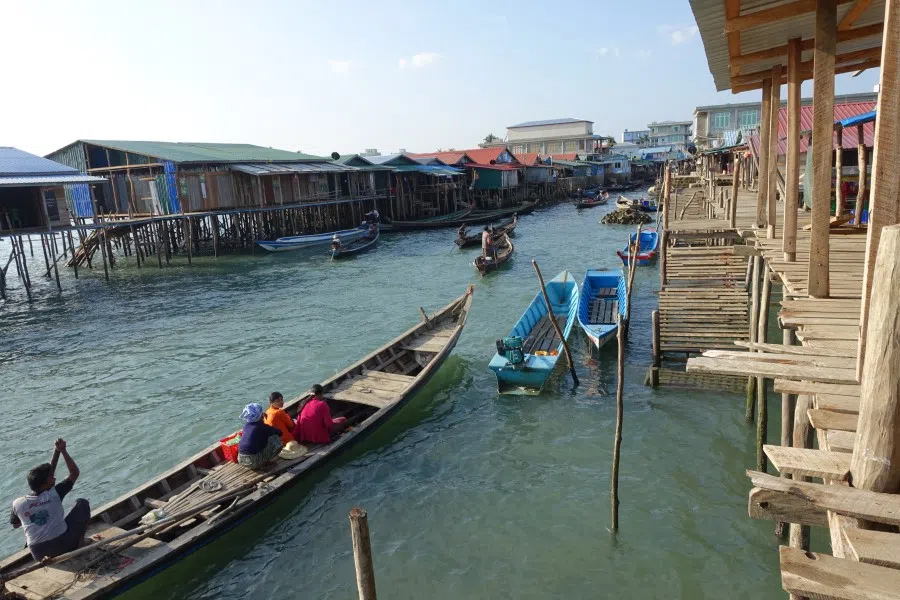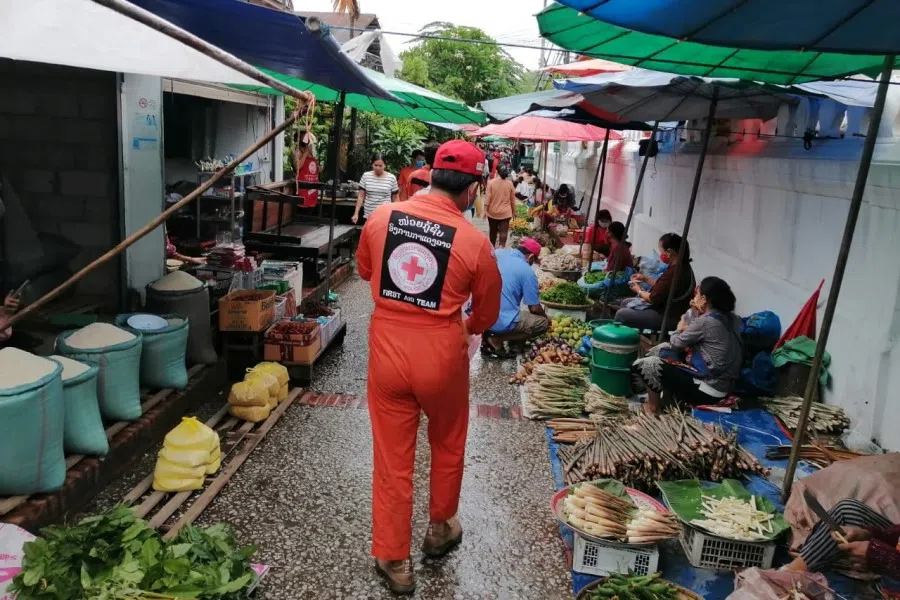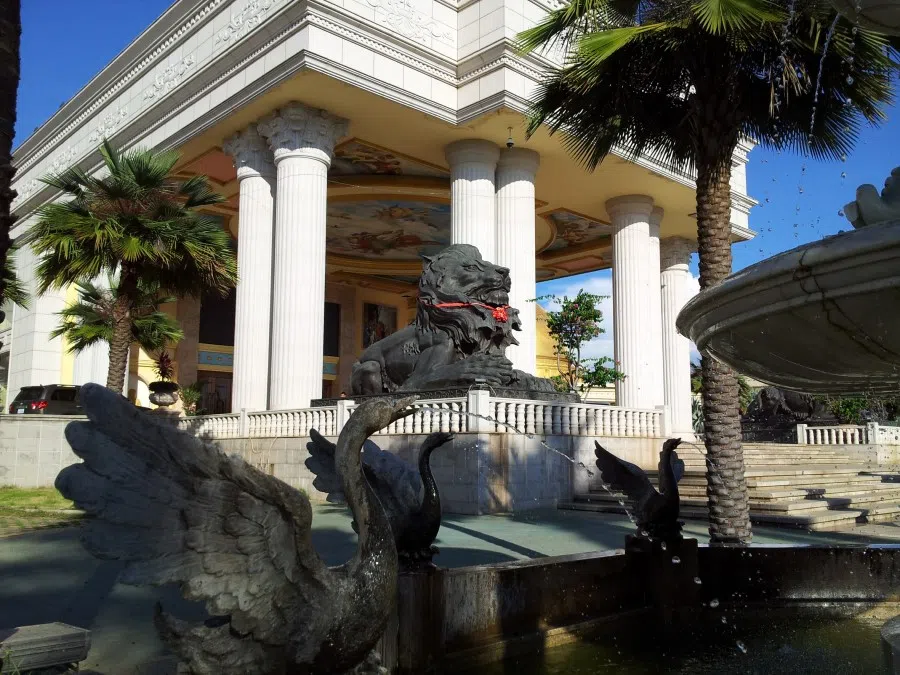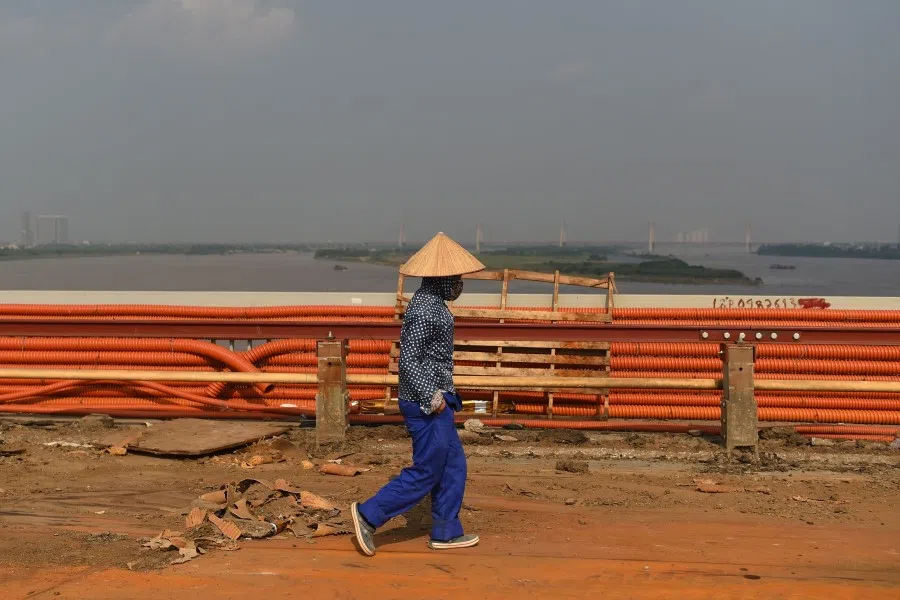China's Belt and Road Initiative faces huge challenges in Southeast Asia
Beijing has pledged financing, materials, technology and manpower to build railroads, hydropower stations and other infrastructure projects in Southeast Asian countries under the BRI. But China continues to face enormous challenges getting projects off the ground in countries that need the investment most. US academic Murray Hiebert examines why.

Barrels of ink have been spilled on hyping up the Belt and Road Initiative (BRI) which Beijing launched with great fanfare in 2013. But in the intervening years, the BRI has faced a raft of challenges as it sought to move across China's southern border into Southeast Asia.
China and its state-owned companies have signed memoranda of understanding with most of the region's ten countries to build railroads, roads, bridges, dams, hydropower stations and special economic zones. Beijing pledged buckets of Chinese financing, excess cement and steel, technology and thousands of workers. Southeast Asian governments are interested because they hope China will help fill the region's giant infrastructure gap and fire up their middle-income economies.
China has faced enormous problems getting projects off the ground in the countries that need the investment most.
Neither China nor its Southeast Asian neighbours has announced how much money in total has been promised or spent on Chinese projects. But RWR Advisory Group in Washington, which monitors BRI projects around the world, estimates that China has started work on or completed projects totalling US$200 billion in Southeast Asia in the five years beginning in 2013. But that number seems inflated to someone who has visited most of the countries in recent years.
China has faced enormous problems getting projects off the ground in the countries that need the investment most. Negotiating the interest rate that a country will pay for a loan from a Chinese bank and/or how large a local government or company will take on is often the subject of years of negotiations. Forced or poorly compensated relocation of farmers to make way for a project has prompted endless protests and complaints and has driven many into poverty.
The lack of concern by Chinese contractors about environmental damage caused by a project has resulted in governments abandoning some projects. Land acquisition particularly in more democratic countries has prompted some farmers to refuse to move. Corruption and hefty kickbacks have dented Beijing's image and caused delays.
Myanmar dragging its feet on BRI projects
It might seem surprising that China faces some of its biggest problems in getting the BRI off the ground in Myanmar, particularly because the country desperately needs infrastructure and Beijing has been one of its only patrons since the regime was accused of kicking out some 750,000 Muslim Rohingya in late 2017.

In August 2018, Myanmar and China finally agreed on a scaled-down Chinese port project at Kyaukphyu, which would provide China access to the Indian Ocean. Myanmar under State Counsellor Aung San Suu Kyi whittled down the cost to US$1.3 billion from the hefty US$7 billion that the previous military government had agreed to in 2015. Myanmar also negotiated to cut its share of the project and that of its companies to 15% each. A Chinese consortium will hold a hefty 70% stake. But so far, almost no work has begun.
A month later the two sides signed a memorandum to establish the 1,060-mile China-Myanmar Economic Corridor to link Kunming in southern China with Mandalay, Yangon and the Kyaukphyu port. Little work has begun there either, except for a feasibility study to build a US$9 billion railroad from Muse on the Chinese border to the port on the Indian Ocean.
In one project China had provided fertiliser, seeds and water pumps to the Ministry of Agriculture, evaluated the cost to be worth US$300 million dollars, charged 4.5% and required Myanmar to repay the loan in ten years in hard currency.

In 2011, the previous military-backed government had cancelled construction of the US$3.6 billion Myitsone Dam in northern Myanmar following nationwide protests. Protestors were angered by the fact that the dam was being built on land held sacred by the Kachin ethnic group and on the Irrawaddy River, considered sacred by people in Myanmar. Many were concerned that the dam would displace thousands of villagers, interrupt fish migration and sediment flows, and disrupt the ability of people downstream to make a living. Nine years later, China has not abandoned the project. The Chinese ambassador still regularly raises the dam in Yangon presumably to press the government to reconsider its decision.
To help get some infrastructure projects approved, Aung San Suu Kyi set up a Project Bank, which includes Western-educated economists, to evaluate the economic viability of proposed schemes. Some of these economists had been involved after Aung San Suu Kyi took office in 2016 in evaluating China's earlier projects, some which had less than generous terms. In one project China had provided fertiliser, seeds and water pumps to the Ministry of Agriculture, evaluated the cost to be worth US$300 million dollars, charged 4.5% and required Myanmar to repay the loan in ten years in hard currency.
Fear of 'debt trap' in Laos
Chinese engineers are blasting tunnels through mountains in Laos to bring a high-speed rail across the landlocked country by 2022 at a cost of US$5.9 billion, more than a third of Laos' GDP. A joint venture Chinese-Lao company got a loan from China's Export-Import Bank for approximately US$4.1 billion or 70% of the rail's cost. Of the remaining amount needed, China will provide equity of US$1.3 billion and Laos will kick in another US$531 million of which US$459 million will come from the Exim Bank with interest of 2.3% to be repaid over 25 years. Much of the amount Laos is providing may go to resettling villagers displaced by project.

However, the rail loan to Laos is only part of its debt to China. Much more is owed for Chinese loans to build hydropower dams on the Mekong and its tributaries. The International Monetary Fund warned in 2017 that Lao public debt was projected to rise to 66% by 2019, which prompted the fund to raise Laos' debt distress level from "moderate" to "high". Over half of this debt is owed to China.
Initially China wanted Laos to take a US$7.2 billion loan, roughly three-quarters of Laos' GDP at the time...
Economists have raised questions about how Laos would pay for the railroad. A Chinese feasibility study estimated that it would lose money for the first 11 years of operation and that estimate assumed that neighbouring Thailand would continue building the railroad south to the Malaysian border. With Thailand unlikely to build this railroad for at least another decade, Laos will have no connection south which likely means the project will continue to haemorrhage money for years.
Interestingly, China and the far-smaller Laos haggled over the terms for five years before beginning construction of the project. They negotiated over the size of Laos' stake in the rail. Initially China wanted Laos to take a US$7.2 billion loan, roughly three-quarters of Laos' GDP at the time, to finance the whole project even though China would have been the biggest beneficiary. Another issue was the interest rate. China offered 3%, but when Laos noted that Thailand was offered 2%, Beijing relented. On Chinese access to land along the railroad, Beijing started asking for 55 yards and finally settled for 16.
Forced relocation and slow compensation of farmers along the railroad has prompted considerable domestic discontent about the project.
A special UN rapporteur who visited Laos in early 2019 sharply criticised the government's China-led development model: "The government's single-minded focus on large infrastructure projects (such as dams and railways), land acquisition, resource extraction, and foreign investment has created too few jobs for Lao people, generated very large debt repayment obligations and disproportionately benefited wealthy elites." He added, "Those living in poverty, ethnic minorities, and people in rural areas have seen very few benefits of the economic boom."

Thousands of Lao minority people have also been dislocated from land around the two special economic zones that Chinese firms have built just across China's border inside Laos. At the giant Kings Romans casino in Laos' Bokeo province, well-off peasants farming and raising animals along the Mekong River were forced to move to make room for the casino, a hotel, a golf course, and a huge agriculture project. The peasants fought back and raised funds to send a delegation to protest to the government in Vientiane, but officials were told it was too late to change course. Those displaced got some compensation, but it amounted to little because they effectively lost their livelihoods and were given unfertile plots of land.
Protests in Cambodia, the nation most beholden to Beijing
Some Chinese projects have faced significant domestic opposition. The 51% Chinese-owned consortium building the Lower Sesan 2 Dam, Cambodia's largest so far and which started operating two years ago, faced protests for several years for alleged forced resettlement of villagers without consultation, illegal logging, practicing poor labour practices and causing the deterioration of water quality downstream. Nearly 80,000 people living above the dam are expected to lose access to migratory fish, a key component of their livelihoods.
Thai generals hold China at arm's length
Soon after the military took over in a coup in 2014, Thai generals agreed to build a 550-mile high speed rail within four years from the Lao border to Malaysia along the route from Kunming to Singapore. Six years later, little has happened. The generals pivoted to China after the US and Europe condemned the coup and called for a quick return to democracy.
Beijing was so irritated at Thai foot dragging that it refused to invite Thai Prime Minister Prayuth Chan-o-cha to the first BRI conference in Beijing in 2017.
But today, more than two dozen rounds of negotiations later, little work has begun as the two countries haggle over the financial conditions, whose engineers would oversee the project, land use rights and technology, and whether Beijing would be able to bring workers from China to work on the project. Beijing was so irritated at Thai foot dragging that it refused to invite Thai Prime Minister Prayuth Chan-o-cha to the first BRI conference in Beijing in 2017.
Chinese companies have completed some feasibility studies and a 2.2-mile pilot rail has been built, but Thai transport analysts doubt Thailand will build a high-speed rail from the Lao border to that of Malaysia within the next decade. Instead, Thailand is focused on building a high-speed rail linking the three international airports near Bangkok and has invited Chinese firms to participate in a project led by a giant Thai conglomerate.
Little enthusiasm for BRI in Vietnam
Vietnam, on paper a communist comrade of China, is avoiding much engagement with the BRI despite the country's desperate need for infrastructure. Regularly facing Beijing's assertiveness in the South China Sea, Hanoi wants to avoid giving China too much leverage should a conflict erupt in the future.
Still, in 2011, Vietnam agreed to allow China to construct a 7.5-mile elevated sky train through the heart of Hanoi, but the project is running way behind schedule and far over budget. Initially it was estimated to cost US$552 million for which China provided US$420 million loan. By 2017, the cost had risen to US$890 million and it still is not fully completed today with Vietnamese and Chinese contractors quibbling over the project's safety certification.

The project has experienced several accidents that have not endeared state-owned China Railways Sixth Group to the local population. In 2014, some rolls of steel fell off the overhead construction, killing a motorcycle driver and injuring two passersby. A month later, a 30-foot section of scaffolding fell onto a taxi, trapping three people inside.
Corruption nearly derails rail project in Malaysia
Corruption is another challenge facing Chinese infrastructure projects in Southeast Asia. After elections toppled Prime Minister Najib Razak in 2018, his successor Mahathir Mohamad suspended work and mounted investigations into several Chinese projects. The biggest was the almost US$16 billion East Coast Rail Link. Mahathir suspected that Najib had received inflated loans from a China-owned state bank that were siphoned off to cover the debts of the scandal-plagued state investment fund. Nearly a year later, Mahathir had managed to renegotiate the terms of the project and announced that construction was back on track.
According to Mahathir, the project cost had been inflated by some US$5 billion to give the contractor, China Communications Construction Company, and two local firms funds to help Najib pay off some US$11 billion in the debt obligations of the investment agency that had run into problems due to a portfolio of frivolous investments. Recognising that cancelling the project would inflict considerable reputational damage to China, it agreed to shave off about a third of the original price and shorten the distance of the route of the rail. Mahathir also suspended three Chinese oil and gas pipeline projects costing over US$3 billion and several other projects.
Two years ago, two videos went viral depicting fights between locals and Chinese workers at an industrial park on the island of Sulawesi. Indonesian workers charged that Chinese nationals blocked them from reciting their Friday Muslim prayers.
China finds Indonesia's investment environment tough
In 2015, a Chinese consortium beat out one from Japan for the contract to build a 90-mile high speed rail from Jakarta to Bandung. The project was to be completed before President Joko (Jokowi) Widodo faced the electorate in 2019. But work on the rail link has been slow. One of the problems has been the unwillingness of farmers to give up their land along the proposed route. Land speculation along the rail has driven up the cost of the project to US$6.1 billion from an initial US$5.5 billion. The Covid-19 pandemic caused work on the project to be halted early this year, prompting officials to say the project would not be completed before 2022.
The sizeable role that China is playing in Indonesia under Jokowi is stimulating a backlash against a "flood" of Chinese workers coming to the country to work on projects. Two years ago, two videos went viral depicting fights between locals and Chinese workers at an industrial park on the island of Sulawesi. Indonesian workers charged that Chinese nationals blocked them from reciting their Friday Muslim prayers. Indonesian students in Sulawesi in mid-2020 were protesting against Chinese working in a mine and calling on their government to expel them.
Philippines gains little infrastructure from pivot to China
A few months after he was elected president of the Philippines in 2016, Rodrigo Duterte visited China and declared that he wanted to mend relations with China which had unravelled after his predecessor had brought a case against Beijing in an international arbitral tribunal for its jurisdictional claims and actions in the South China Sea. Duterte told his hosts that he would "set aside" the tribunal ruling that had decided overwhelmingly in favour of the Philippines.

Duterte returned to Manila from that visit with some US$24 billion worth of pledges for infrastructure projects such as rail links, ports and hydropower plants. But in the past four years Chinese companies have built none of the infrastructure projects, except for two small bridges. Chinese firms drafted some plans and did some feasibility studies, but in the end little happened. In some cases, Chinese companies withdrew when they got Philippine government guidelines. In others, Philippine officials backed out after reviewing a project's social and environmental impact. Some Chinese companies had difficulty raising funds for their projects.
The value of newly-signed BRI projects was down 20% in the first 11 months of 2018 compared to the same period a year earlier.
Fine-tuning of BRI projects necessary
Despite the many challenges China's projects have faced in Southeast Asia, China has demonstrated considerable flexibility and willingness to compromise at least on rail projects. In Thailand and Laos, Beijing dropped its earlier demand for sizeable swathes of land along the railroad. China was also willing to negotiate more concessional financing packages and more generous ownership models and dropped demands for resource collateral for loans such as an earlier proposal for a rice-for-rail arrangement with Thailand.
With the slowing of the Chinese economy, the Covid-19 pandemic, and mounting tensions with the US, spending on the BRI appears to have begun to drop in recent years. The value of newly-signed BRI projects was down 20% in the first 11 months of 2018 compared to the same period a year earlier.
China appears to have heard at least some of the criticisms and has begun fine-tuning the BRI. In a speech at a BRI conference in Beijing in 2019, Xi softened his earlier triumphal tone and pledged to rein in corruption, boost transparency and avoid heaping large amounts of debt on BRI recipient countries.
This article was first published as ISEAS Perspective 2020/95 "China's Belt and Road Finds Southeast Asia a Tough Slog" by Murray Hiebert.





![[Big read] China’s 10 trillion RMB debt clean-up falls short](https://cassette.sphdigital.com.sg/image/thinkchina/d08cfc72b13782693c25f2fcbf886fa7673723efca260881e7086211b082e66c)